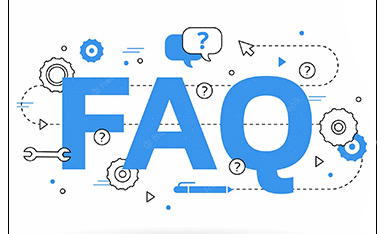 English
English-
 Español
Español
-
 Português
Português
-
 Portugiesisch
Portugiesisch
-
 Français
Français
-
 日本語
日本語
-
 Български
Български
-
 한국어
한국어
-
 Türkçe
Türkçe
-
 Nederlands
Nederlands
-
 English
English
-
 Eesti
Eesti
-
 Suomi
Suomi
-
 বাঙ্গালি
বাঙ্গালি
-
 беларуская
беларуская
-
 Ελληνικά
Ελληνικά
-
 Kreyòl ayisyen
Kreyòl ayisyen
-
 עִברִית
עִברִית
-
 हिन्दी
हिन्दी
-
 Magyar
Magyar
-
 íslenskur
íslenskur
-
 Gaeilge
Gaeilge
-
 italiano
italiano
-
 Hrvatski
Hrvatski
-
 Latinus
Latinus
-
 latviski
latviski
-
 Melayu
Melayu
-
 Malti
Malti
-
 Монгол
Монгол
-
 မြန်မာ
မြန်မာ
-
 فارسی
فارسی
-
 Polski
Polski
-
 عربي
عربي
-
 Română
Română
-
 русский
русский
-
 slovenský
slovenský
-
 Slovenščina
Slovenščina
-
 Afrikaans
Afrikaans
-
 svenska
svenska
-
 dansk
dansk
-
 український
український
-
 o'zbek
o'zbek
-
 Cymraeg
Cymraeg
-
Zulu
-
 Tiếng Việt
Tiếng Việt
-
 bosanski
bosanski
-
 Deutsch
Deutsch
-
 eesti keel
eesti keel
-
 ไทย
ไทย
- How on earth is QR code recognized? How does the black and white cube store data?
- The co-inventor of the bar code has died, He's the one who changed the round size into zebra print
- Is the IP protection level of the bar code scanning gun as high as possible?
- Choose and buy Industrial bar code scanner, stable use is more critical
The co-inventor of the bar code has died, He's the one who changed the round size into zebra print
Thu Jan 05 17:53:49 CST 2023
IBM never patented the bar code and, according to Laurel, used the label as a way to sell devices.
Bar codes, made up of black stripes and numbers of varying thicknesses, have long been commonplace in industries such as retailing, books and the postal service. Though only a few decades old, it has revolutionized all walks of life.
One of the engineers who developed the tag, American George Laurer, died last week at his home in North Carolina at the age of 94, the BBC and other media reported on Dec 10. As an engineer at IBM in the 1970s, Laurel developed what is now the rectangular Universal Product Code, or UPC, commonly known as the bar code.
At the time, stores in general were struggling with rising costs and intensive labor, and needed to put a price tag on everything, Laurel said in an interview. His UPC system can scan items quickly, which means fewer errors in pricing, and it's easier for stores to keep track of inventory, clearing the way for later self-checkout.
In fact, the concept of barcodes is much older. Norman Woodland, a colleague of Laurel's at IBM, is credited with pioneering the bar code idea, which was originally based on Morse code in the late 1940s. But while Woodland patented his idea of a circular code, there wasn't enough computing technology to develop it.
By the 1960s, although some companies occasionally used such labels, there was no standardized system, and no small, cheap and reliable labels were widely used in grocery stores. Cashiers still had to press buttons to manually enter the price of each item.
Mr. Laurel thought it would be better to use stripes rather than circles -- Mr. Woodland's designs were too large, he thought, and prone to problems in scanning and printing.
As a result, the zebra-striped universal product code with numbers, developed by Laurel, went mainstream. In June 1974, a pack of Wrigley's fruit gum in Ohio became the first item to have a barcode scanned. It is now on display at the National Museum of American History in Washington, DC.
Today, universal product code is scanned more than 6 billion times a day, according to GS1, the nonprofit organization that manages and distributes it.
Laurel was born in New York in September 1925, the son of a lawyer turned electrical engineer who had moved the family to Baltimore, Maryland, to work for the Navy. According to The Washington Post, Laurel grew up tinkering with radios and model airplanes and building small wooden boats out of fruit baskets to sail around local parks.
Laurel served in the U.S. Army during World War II and returned home to study electronic repair at a technical school. Teachers at the school advised Laurel to get a high school diploma before going on to college. Laurel graduated in electrical engineering from the University of Maryland in 1951 and joined IBM.
Laurel was awarded more than 20 patents during more than three decades at IBM and spent most of his career developing barcode sensors. He told the Charlotte Observer in a 1998 interview that the company never patented the bar code, but only used the label as a way to sell the device.
At IBM's centennial celebration in 2011, Laurel was recognized as one of the company's contributors to 100 iconic moments.
A few decades ago, Laurel never thought the bar code would have the impact it has, and is in awe of the invention. Laurel later patented the first scanner used to read bar codes, according to an obituary provided by the funeral home.
In an interview in 2010, Laurel said, "When I saw these clerks using the scanners, I kept thinking... It works so well."



